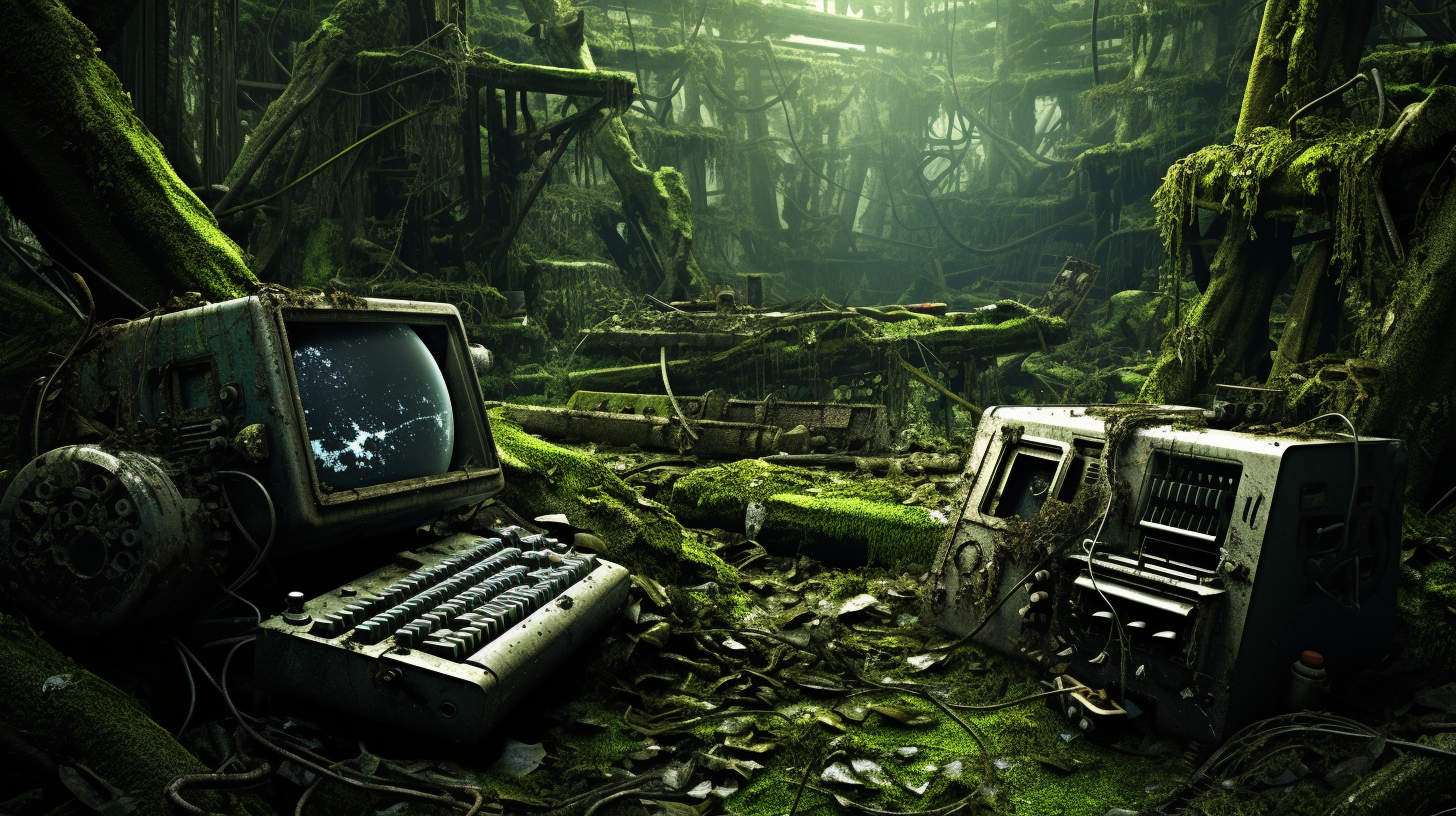Once markers of an advancing civilization, thick with promise, the modern relics that now litter our altered landscapes whisper tales of the greener past they were born from – a prelude to decay. In a world where the greenery of Earth is suffocated by its own technological genius, these relics stand testament not to innovation, but to the remnants of a world they themselves helped dismantle. They are the new fossils of our age.
The relics of green technologies—solar panels, wind turbines, and electric vehicles—have become curious artifacts, excavated from the ruins of a time where optimism coexisted with consumerism. Exposed to the relentless sun on landscapes that mirror the red deserts of Mars, which we once feared we’d have to colonize, these technologies narrate a history of a spiraling descent.
The sun’s intensity, now unfiltered by weakened ozone, bleaches the photovoltaic surfaces while wind turbines stand motionless, monuments to the capricious weather patterns that have rendered them obsolete. As these relics are discovered, interspersed among the encroaching sands, the irony is palpable: the green solutions of the past now just fossilized skeletons in a world that could not course-correct swiftly enough.
One poignant image encapsulates this disjunction: a child’s toy, a miniature wind turbine, half-buried beside its gigantic, immobile predecessor. Such imagery serves as a stark reminder of how the echoes of our previous environmental hopes are now just that—echoes, and nothing more.
From the now acidic oceans that eat away at once monumental offshore platforms, to the deserted megafactories meant to mass-produce the electric dreams of a population that truly believed it could buy its way out of climate disaster, these are the remnants we have left behind. Food scarcity nips at civilization’s heels, resulting in long-abandoned vertical farms that stand as haunting mausoleums of technological hubris.
Even the most advanced climate modeling software, with algorithms that churned data to predict and potentially prevent our demise, lies dormant on antiquated servers. Each code line, each predictive model, they stand as digital epitaphs written in a language of urgency that was always, perpetually, ignored.
As history’s cruel lesson, we now navigate a labyrinth of our own creation. Where sustainability once germinated, barren fields spread endlessly, showcasing a graveyard of innovation. We glance back at these new fossils with a forlorn sense of nostalgia—not for the loss of the technologies themselves, but for the loss of what they represented: the last tangible effort of a civilization to coexist with its planet, rather than to dominate it.
In the context of our present, where every technological stride seems a feeble echo against the drumming of relentless storms and desolation, these relics are the storytellers. Their tales are not of achievements or progress but of an epitaph to a greener age—an age we can no longer return to, entombed in a museum without walls, without visitors, and without the possibility of revival.
